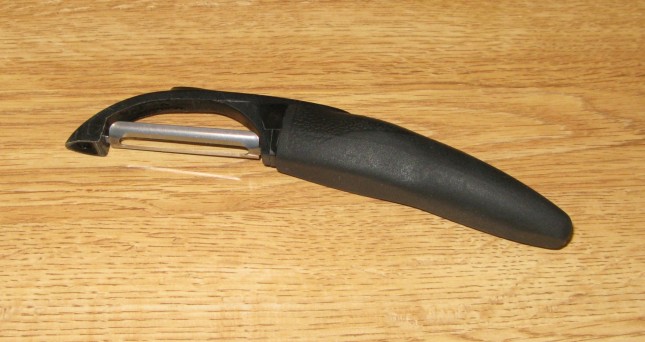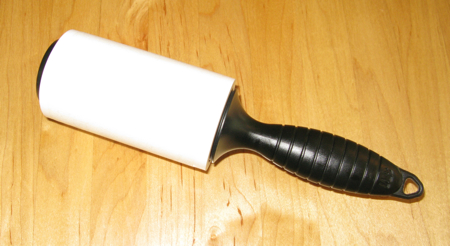[Written by Rodney Gates for Designing Sound]
The Blank “Page”
As we sit at our desks each day, creating new sounds for a game, it’s important to think outside the box when it comes to choosing your source material from which to design from.
Most of the sounds you hear in games or film are usually not a single recording edited and dropped into place to represent the things you are looking at. They are complex sounds that are arrived at through careful design and mixing and are usually comprised of elements that you might not expect.
Take a laser blast for example. Since none of them truly exist, we can use our creative license and create them from all sorts of source material, and no two Sound Designers will do it the same way.
Ben Burtt used recordings he made of a suspension cable struck with a hammer as the basis for the blasters in Star Wars. Others may use synth elements blended with existing real-world weapons recordings to arrive at their sound, often times run through a Doppler plug-in or using similar pitch-shifting effects. Even Formula 1 car bys can be pitched way up, creating an almost ricochet-type element that can become part of the sound. In my case, pitched-up ricochets themselves can be used, as I did for my original demo.
The choices are limitless when you start to experiment with what you can do with a particular sound you are auditioning. What would it sound like pitched up or down 3 octaves? Flanged? Reversed? Or run through some rapid amplitude modulation and other effects, or through a sweeping filter? Keeping this mindset hones your ability to quickly search for sounds that are in the correct frequency ranges or possess the timbre you seek to aid you in achieving the result you are after.
Some Sound Designers take the creation process one step closer to the source material by creating real-time plug-in chains right in their sound database software to audition through. Within Soundminer’s VST plug-in architecture, you can immediately audition source material and determine if something is going to work for you, before importing it into Pro Tools with the effects applied to the source. Cool idea, and a workflow enhancement to boot.
Recent Sound Discoveries
Here are a few examples of cool sounds I have come across recently that I have been recording and know I will use one day:
Sound 1 – Foam Bath Letters

I came across the wonderful squealing and squawking sounds that these Munchkin bath letters made a few months ago when I rubbed them across the wet surface top of the tub wall while my daughter was taking a bath. You can literally “perform” them, as they respond wonderfully to various pressures and speeds. The frequencies are quite high, but you can get them to really squawk like a goose might for some cool guttural sounds.
Sound 2 – Upstairs Vacuum

My wife was vacuuming upstairs one day while I was in the room beneath her, and the sounds of the machine on the carpeted floor above was generating this awesome, muted flanging-type whine that could easily be used as an electronic element for a science fiction vehicle’s engine.
It reminded me of a special feature I saw with Ben Burtt again using an electric razor inside of a stainless salad bowl to generate a modulating, metallic engine element he used for the hover tanks in The Phantom Menace. I recorded a variation of this myself when creating some sci-fi elements for vehicles in Transformers: War For Cybertron (except I think it was a metal pasta strainer).
Sound 3 – Small Scissors

I have this little pair of Kane scissors that when open and closed rapidly, they mimic the sound of a typewriter key “tick”. Also, I remembered some computer text-scrawl loops I had created for Transformers: War For Cybertron, and realized I could easily use an element like this as part of a sound similar to that again, if not just for an actual typewriter itself.
For the T:WFC sound, I had edited tiny snippets of organic sounds like glass clinks, silverware tinks, etc., along with other elements, and stuck them on a tight Grid in Pro Tools to generate the loops, with tasteful use of flanging and reverb.
Sound 4 – Potato Peeler

I was putting away dishes and noticed the wonderful “ping” sound our Cutco potato peeler made. I listened closely to it as I flicked it with my fingernail, and it sounded like I would imagine one partial revolution of a Gatling Gun’s mechanical motor might sound. If several of them were edited together tightly, this effect could easily be achieved.
Sound 5 – Lint Roller

I used this 3M lint roller the other day and it made a wonderful, skipping “power-down” sound as the cylinder holding the tape sheets spun to a stop. It sounded very electronic, like a servo in a flatbed scanner. If recorded at high resolution and pitched and / or reversed accordingly, I could generate a cool element for a power-up / power-down sequence sound in a game that would belie its small size.
Conclusion
These are just some examples of cool sounds you can find around the house. I recommend you invest in some kind of portable recorder (I have the Sony PCM-D50) that can record at least 24-bit / 96kHz files, and keep it with you. Many sounds you come across are unexpected, and this will increase your chances of capturing something that no one else has.
There have been more than a few recordings I have made that I didn’t slate, and coming back to them many weeks or months later, I have no idea what they are! So I just listen to them and describe the files in a way that makes the most sense (though I will always wonder where the heck I was when I made them). This will ensure their use in some unintended sound down the road.
Learning to listen to sounds and realizing their potential is a career-long journey, but there’s no reason you cannot start now if you are an audio student or aspiring Sound Designer.
Another great article Rodney, please keep writing them when you have the time. So few article / blog posts give relevant and practical information that you can actually run out and try. I too have done my best to decipher Ben Burt methods. Luckily for all of us, Ben is open with his thoughts and practices as well!
Thanks! It’s a busy month, so I’m hoping this info is helpful and not entirely too elementary.
As for Ben Burtt, I loved that the Sounds of Star Wars book was released last year. Years back I created a powerpoint that played clips of narration from him that I had ripped from all of the DVD commentary tracks, to keep as reference whenever things seemed stale. That had a lot of tips that I hadn’t seen in print prior. Kind of my geek-out time with SW, LOL.